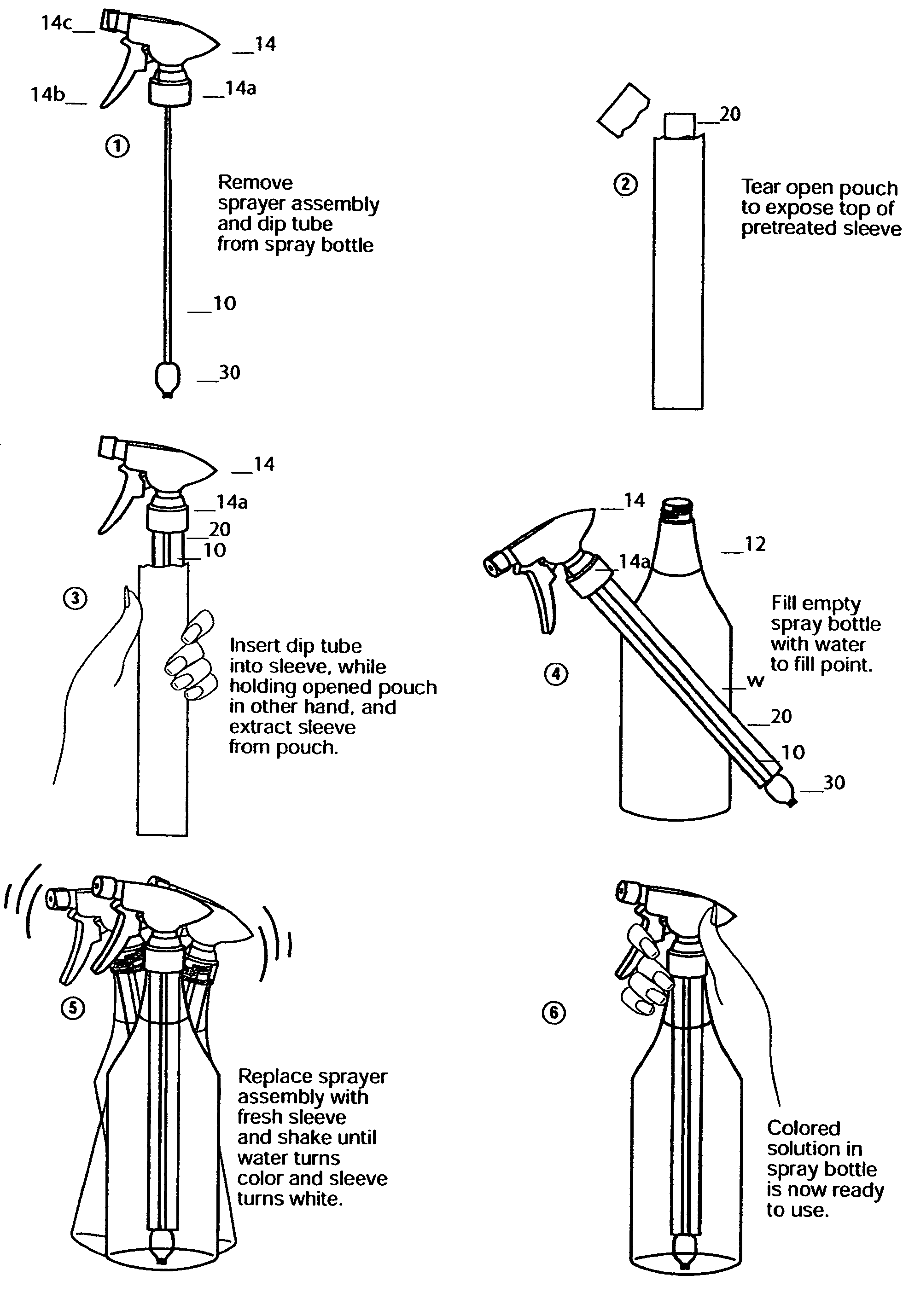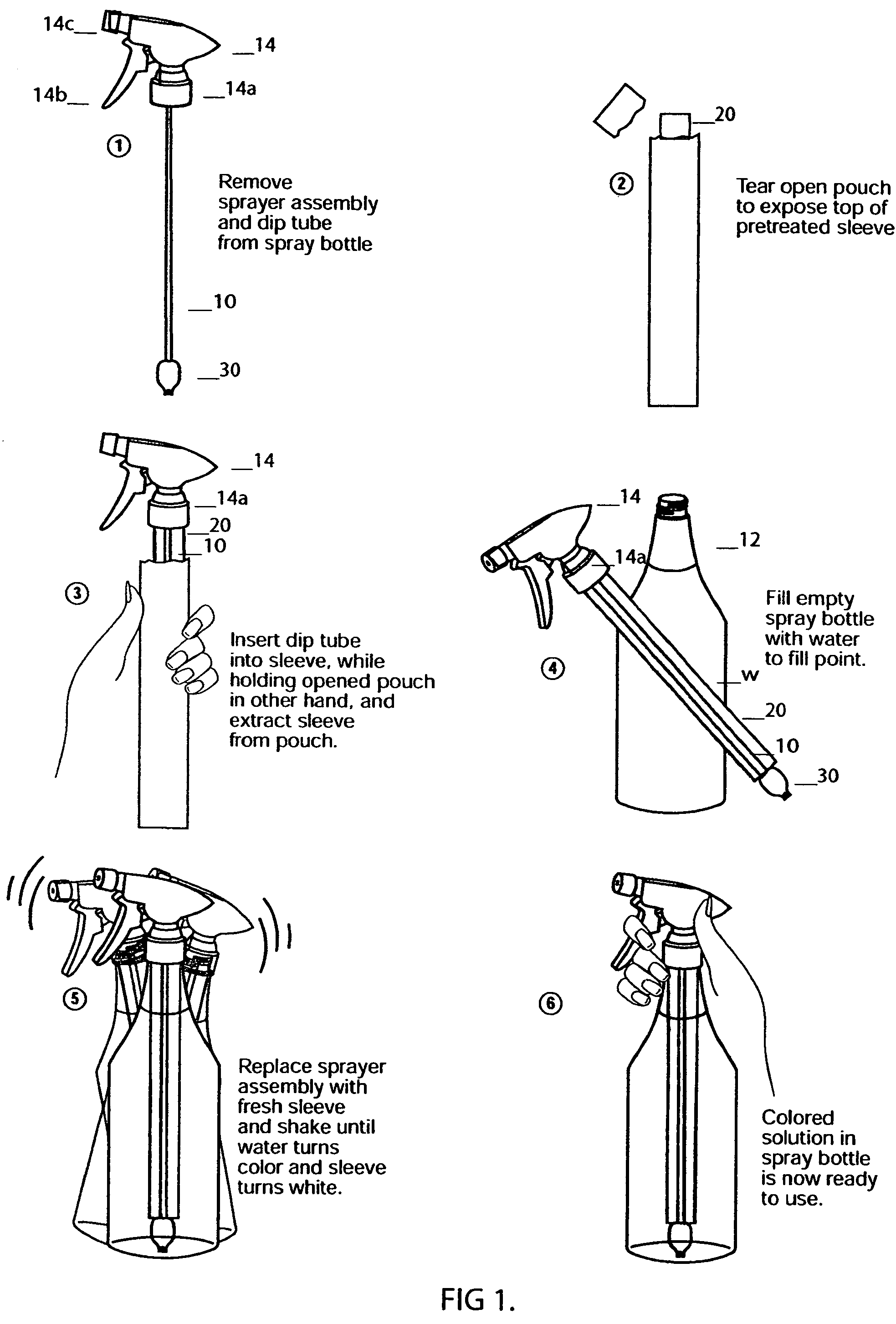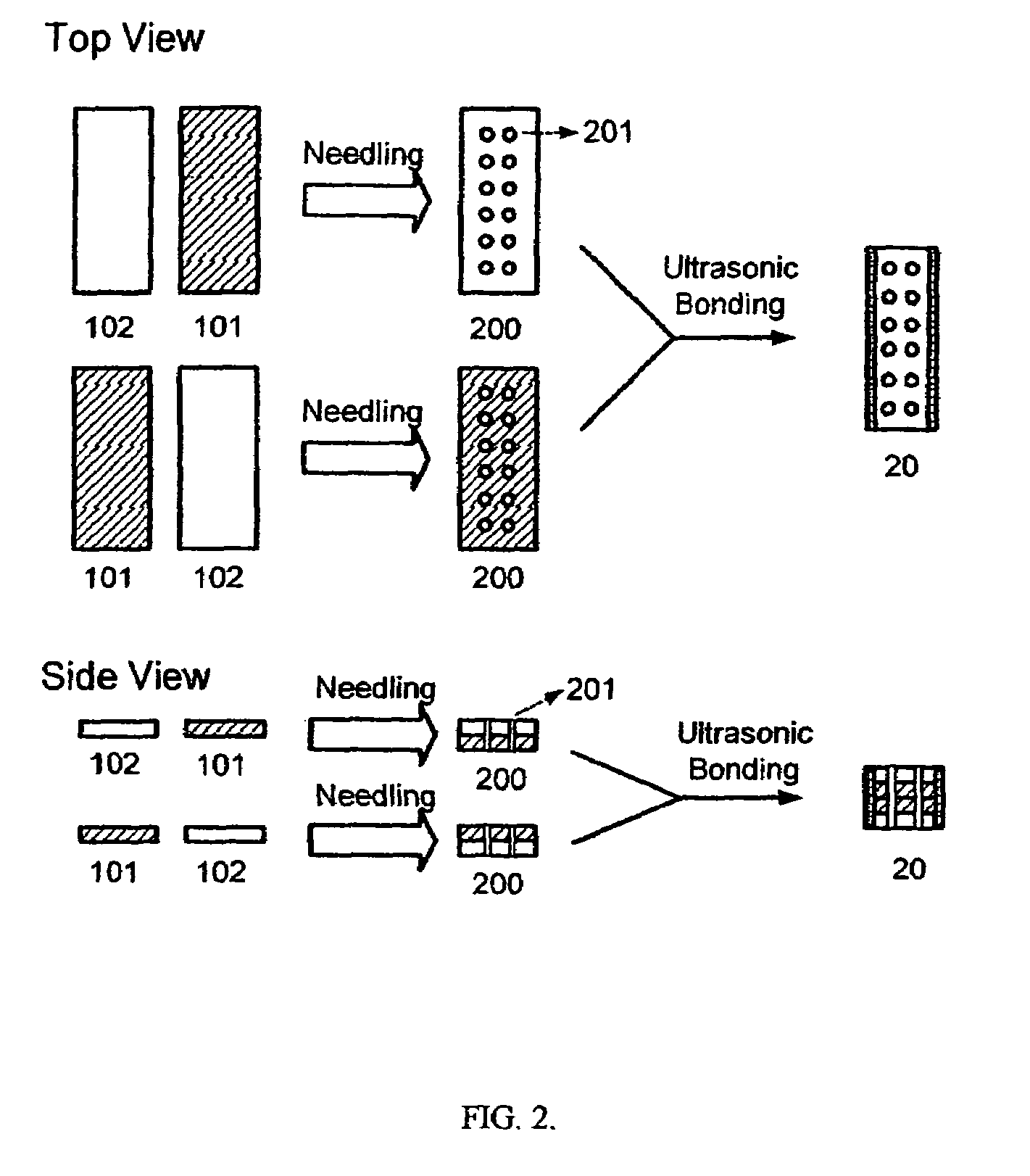Retainer for sleeve for recharging a cleaning, sanitizing or disinfectant fluid spray system
a technology of spray system and refilling sleeve, which is applied in the direction of cleaning process and equipment, packaging, chemical equipment and processes, etc., can solve the problems of requiring shelf space, requiring refill bottle sales, and requiring spillage of refill bottle fluid, so as to facilitate the insertion of the diptube/retainer structure, facilitate the extraction of the sleeve, and stabilize the diptube
- Summary
- Abstract
- Description
- Claims
- Application Information
AI Technical Summary
Benefits of technology
Problems solved by technology
Method used
Image
Examples
Embodiment Construction
[0019]Referring to FIG. 1, a preferred embodiment of a recharge sleeve 20 in accordance with the present invention is illustrated for use with a standard spray dispenser device having a container body 12 for holding fluid, a sprayhead 14 mounted with a sealing cap 14a, spray trigger 14b, and spray orifice or nozzle 14c, an elongated diptube 10 which is inserted into the body of the container 12 during use, and a retainer 30 attached to the lower end of the diptube during manufacture of the diptube. The recharge sleeve 20 is comprised of an absorbent matrix material with one or multiple layers wherein at least one layer is impregnated with a chemical composition, leaving the sleeve dry-to-the-touch, the chemical composition becoming dissolved in solution with a diluent fluid such as commonly available tap water.
[0020]The recharge sleeve 20 is shaped as a rectangular elongated sleeve by adding or combining at least two layers of water insoluble fibrous material sealed along their elon...
PUM
 Login to View More
Login to View More Abstract
Description
Claims
Application Information
 Login to View More
Login to View More - R&D
- Intellectual Property
- Life Sciences
- Materials
- Tech Scout
- Unparalleled Data Quality
- Higher Quality Content
- 60% Fewer Hallucinations
Browse by: Latest US Patents, China's latest patents, Technical Efficacy Thesaurus, Application Domain, Technology Topic, Popular Technical Reports.
© 2025 PatSnap. All rights reserved.Legal|Privacy policy|Modern Slavery Act Transparency Statement|Sitemap|About US| Contact US: help@patsnap.com



